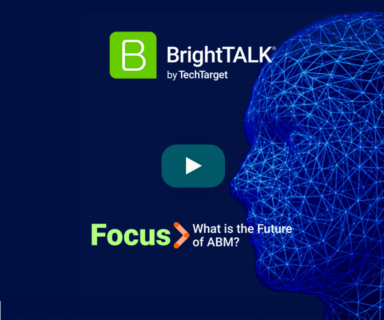- February 13, 2020
- Advertising, Intent Data
The Death of Third-Party Cookies: What’s Next for Intent-Based Digital Advertising?
 You’ve probably heard the news: Google is killing third-party cookies. This announcement, combined with regulations like GDPR and CCPA, has ushered in a transformational moment for the ad tech space. We want to help you understand what all the fuss is about, how it affects you, and what you can do to get ahead of it.
You’ve probably heard the news: Google is killing third-party cookies. This announcement, combined with regulations like GDPR and CCPA, has ushered in a transformational moment for the ad tech space. We want to help you understand what all the fuss is about, how it affects you, and what you can do to get ahead of it.
What’s happening and why is it a problem?
In the interest of protecting user privacy Google plans to make third party cookies obsolete by 2022. Instead Google will anonymize and aggregate user browsing behavior and make it available in something called a “Privacy Sandbox”. Together, Google Chrome, Firefox, and Safari own nearly 90% of web browser market share. And with Google’s move these browsers have now all abandoned third party cookies. There are two major outcomes of this shift:
#1 – Programmatic ad targeting as we know it will soon be dead
The vast majority of programmatic ad providers rely on third-party cookies to find, identify, and target prospects on the web. It will be impossible for them to operate the way they do today in a cookie-less world.
#2 – Many intent providers will lose a massive amount of user behavioral data
Intent providers that rely on third-party cookies and programmatic ad engagement to source intent signals will be forced to rethink their approach and, in some cases, their entire business model. Here’s a quick look at how two of the most common business models will be affected:
- Aggregated Third-Party Model – Over time these companies have aggregated third-party cookies to build up large data pools that they use for re-targeting and to source intent. Once third-party cookies go away, so will these data pools, devastating their ability to source intent data and run programmatic advertising.
- Re-targeting Model – These companies use first-party cookies from your website to follow users off of your website and influence them on un-owned websites. But once someone leaves your network, those first-party cookies become third-party cookies. That means they won’t be able to find or influence your audience off of your own websites.
Is there any good news?
While there is short term pain, many marketers recognize that there are many reasons this is a positive change for the industry in the long run. Chief among them is the fact that by building a more secure web we are building more trust with our audiences.
Google’s announcement, as well as regulations like GDPR and CCPA, prove that companies and governments are taking data privacy seriously. This signals to all of our customers and prospects that their personal data is being respected and protected. When web researchers feel confident they are in control of their own data, they’ll be more willing to share that data with companies they want to do business with.
What should you do to stay ahead of this?
As with any major transition new opportunities are opening up for companies that use programmatic advertising or intent data in their marketing programs. Here are a few things you should be thinking about and doing to make sure this shift is a positive one for your company:
#1 – Optimize your ability to collect your own first-party data
In a world without third-party cookies, collecting and acting on as much first-party user data as you can is paramount. Ensure you are creating the most enriching experiences you can across your own websites and outreach strategies to understand what users are doing, what they are interested in, and to entice them to engage with your CTA.
#2 – Find new ways to source and leverage intent data
Many valuable behavioral signals aren’t tied to cookies at all. Interactions like email engagements, social network initiatives, and even phone calls are all important sources of intent. Every single touch point you have with an individual is critical behavioral information to help you influence and engage them. Focus on creating stellar experiences across all touch points. Furthermore, you must connect and collect them so they can be used effectively in outreach.
#3 – Work with original content publishers for digital advertising and intent data
A large chunk of intent data will disappear with third-party cookies – but not for publishers. Companies like TechTarget own large networks of websites and use first-party cookies to track, influence, and derive purchase intent from your audience. This eliminates the need for third-party cookies. By using an opt-in membership model, they can ensure GDPR, CCPA, and CASL compliance so you never have to worry about infringing upon privacy regulations by contacting the prospects they provide you. Work with companies that prioritize data privacy best practices to guarantee your company stays in front of the current trends of tightening data privacy.
#4 – Ask your ad and intent providers if they use third-party cookies to identify audiences and/or intent. Here are a couple of good questions to ask:
- What’s your stance on Google’s announcement about discontinuing third-party cookie tracking?
- How do you plan to move away from third-party cookie tracking in the next year?
The most important thing to do is to start asking questions now. Even though the final nail in the coffin is two years out, it’s uncertain when this transition will begin. Make sure you’re taking proactive steps and working with partners that you trust long before these changes take full effect.
Learn about TechTarget’s first-party advertising and intent solutions today.
b2b purchase intent data, data-driven display, GDPR, Google, programmatic advertising, third-party cookies



